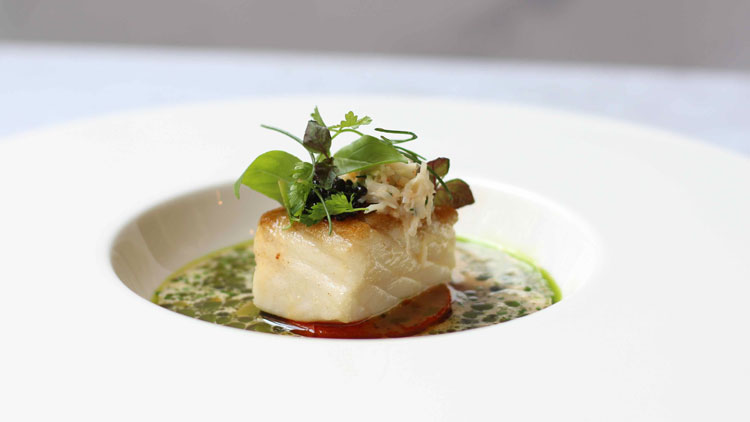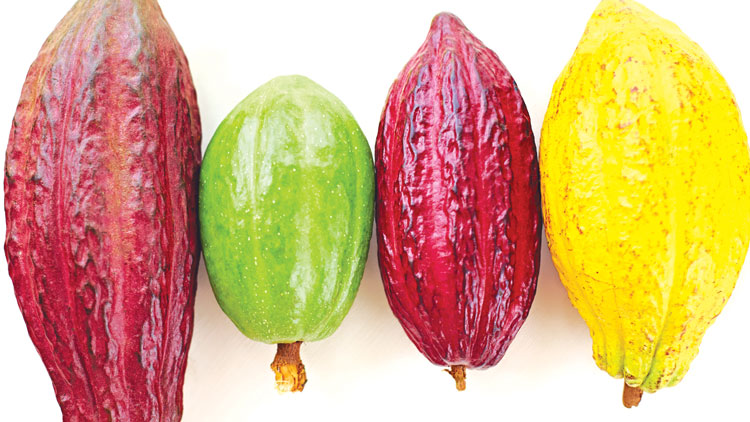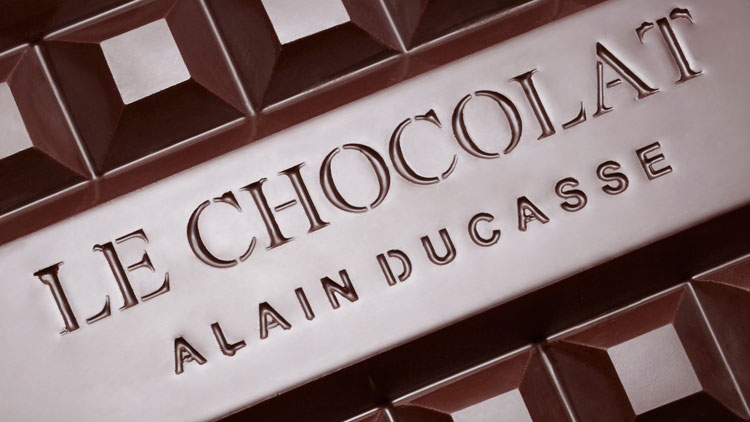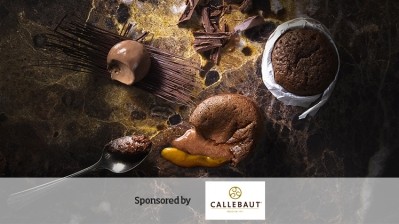Five ways to raise your restaurant’s chocolate game
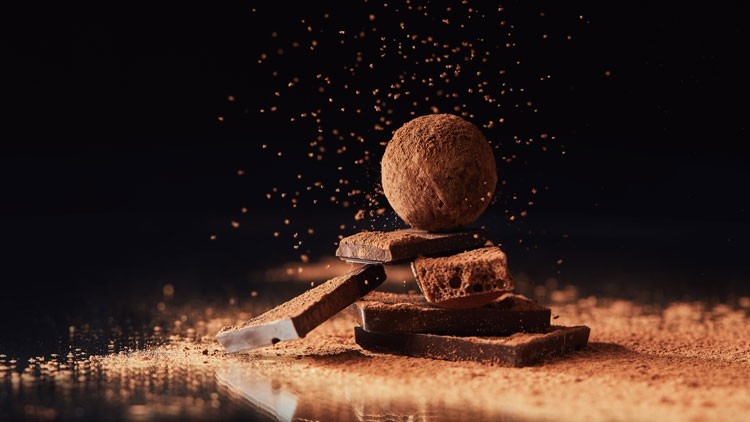
1 Introduce healthier chocolate options
Chocolate is usually associated with decadence, but it is possible to make chocolate desserts more healthy. Generally speaking, the darker the better: the higher the cocoa content the lower the sugar and fat, and the more beneficial antioxidants. However, Callebaut is shaking the market up with a new milk chocolate that is made with just 1% added sugar.
Ecl1pse boasts up to twice the milk and cocoa content compared to regular milk chocolate and is described as being darker, smoother, creamier and more intense than other milk chocolate offerings. The chocolate is versatile and can stand in for other varieties of chocolate in almost all recipes, although its higher fat content does increase the likelihood of some preparations – including ganaches and mousses – splitting, so it is recommended that chefs combine Ecl1pse with less fatty creams or a mix of cream and milk.
The product allows chefs and chocolatiers to reduce sugar content in their products by up to 20%. “Ecl1pse demonstrates that reduced sugar doesn’t mean reduced flavour,” says Barry Callebaut sales director Robert Harrison. “With increased pressure on the industry to reduce sugar consumption, there is an onus on manufacturers such as ourselves to develop products that offer solutions that don’t compromise on quality or flavour. Callebaut’s latest innovation literally means consumers can have their cake and eat it.”
Callebaut isn’t the only chocolate company to start considering its customers’ waistlines. As the war on sugar and fat intensifies, more and more chocolate companies are looking to overhaul chocolate’s unhealthy image. The chocolate market is now awash with bars with very a high cocoa content – thus containing less sugar – including some, such as Menakao Madagascar chocolate, that is 100% cocoa.
2 Don’t restrict it to desserts
Chocolate is a surprisingly versatile ingredient that can be used to add interest to savoury dishes. Established combos include venison and chilli con carne, but don’t be afraid to think outside the box, says chocolatier Paul A Young, who recently collaborated with The Frog chef Adam Handling on a limited-edition menu that featured chocolate in every dish.
“We avoided anything gimmicky. The flavour combinations see familiar ingredients paired in unfamiliar ways,” says Young. “Chocolate can be used in lighter dishes and alongside more delicate ingredients. For example, Adam and I did a hake with crab and tomato dish that used a white chocolate. The trick is to not overpower things, chocolate is a powerful flavour.”
The chocolate was introduced to dishes in a number of different ways: acidulated into dressings, poured on, infused or simply shaved over the top.
Young adds: “Chefs need to think of chocolate as a fat, it’s much easier to introduce it into dishes that way. You can use it to emulsify sauces, but you tend to need more liquid because chocolate obviously sets solid.”
Other dishes on the menu included brandade tortellini, pickled leek and liver with 76% Vanuatu Islands Cacao dark chocolate; and celeriac, truffle, date and lime with Duffy’s 72% Honduras Indio Rojo Dark Chocolate.
3 Explore new origins
It’s surprising how little the origin of chocolate is name-checked on menus. Diners have never been more interested in where their food comes and are increasingly understanding of the fact that – like wine and coffee – different growing areas mean different flavour profiles. Flagging the origin also lets diners know a restaurant cares where its ingredients come from and, broadly speaking, chocolate that comes from a designated growing region or country is more likely to have been sourced ethically (although it’s always worth grilling your supplier for extra peace of mind).
French chocolate maker Valrhona recently expanded its Cuvée du Sourceur range of high-quality single origin chocolate. Cuvée Sakanti Bali is a 68% chocolate with a scent of grilled bananas and caramelised notes. It has a gentle tanginess set off by hints of fruit that are followed up by intense chocolatey notes, which give way to a subtle bitterness. The second chocolate is Cuvée Kilti Haiti, a 66% chocolate with notes of vanilla and toasted nuts.
“Water can be used to emulsify chocolate.
It’s a bit like adding water to whisky,
it can really open it up"
4 Introduce a vegan option
Many chocolates are suitable for vegans, but very few chocolate desserts are. High-profile chocolatier Paul A Young thinks that chefs are far too quick to add dairy products to some chocolates. “If you add milk or cream to dark chocolate it becomes milk chocolate. It totally changes the character and has the potential to remove some of the more delicate and nuanced flavours.
It’s often best to use non-dairy liquids in chocolate recipes,” says Young, who was a head pastry chef for Marco Pierre White prior to launching his eponymous group of chocolate shops.
Options include – but are by no means limited to – tea, coffee, fruit juices, wine and water. While it’s often said that chocolate and water don’t mix, that’s not necessarily the case, continues Young. “Water can be used to emulsify chocolate. It’s a bit like adding water to whisky, it can really open it up. Avoiding cream will give you a cleaner finish without the fattiness.”
Most dark chocolate is ‘accidentally’ vegan, but some does contain a small amount of milk or other non-vegan products, so always check the ingredients.
5 Make your own
Not for the faint-hearted, this one. The equipment isn’t prohibitively expensive; the only bit of essential kit required that won’t be in a typical commercial kitchen is a wet grinder, although there are several other pieces of kit that will make the process less laborious. The biggest challenge is actually the sourcing of high-quality beans and acquiring the know-how to do it properly.
“You have to do it well,” says Young. “There are a lot of people grinding beans these days but there’s a fine line between brilliant craftsmanship and something that feels a bit rough and ready. You need to be obsessive about it. Cocoa beans are not an easy product to work with.”
Artisan bean-to-bar is one of the most exciting parts of the UK chocolate scene at the moment. These producers tend to source high-quality beans directly from the grower and then make chocolate in small batches. Some producers supply restaurants but, given the high price of the raw materials and the labour-intensive nature of the production process, it doesn’t come cheap.
All of Alain Ducasse’s restaurants use a special blend of chocolate created by the chef’s team of chocolate makers in central Paris. Ducasse’s chocolatiers select beans from 15 different origins and processes them using vintage machinery. The chocolate is also available at Le Chocolat Alain Ducasse, which has shops in Paris, Tokyo and – most recently – London.
“Our aim is to extract the original taste of the beans, we don’t use any colourings or flavourings,” says Damien Couliou, general manager at the London Le Chocolat Alain Ducasse, which opened last month. “We go to great lengths to source beans from unusual sources. For example, one of our chocolates is made from the wild cocoa beans that are found in the jungles of Bolivia.”
The chocolate is delivered to the London store via the Channel Tunnel. Key products include bars, bon bons, chocolate-dipped candied fruit and nuts, a chocolate spread and hot chocolate.
This is a web version of an article that first appeared in the September issue of Restaurant magazine, the leading title for the UK's restaurant industry. For more features, comment, interviews and in-depth analysis of the restaurant sector subscribe to Restaurant magazine here
